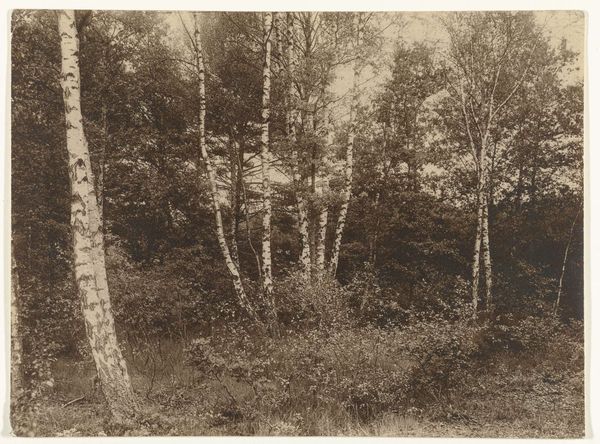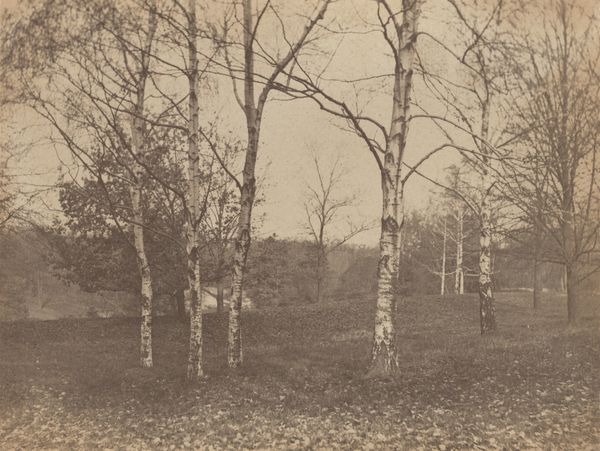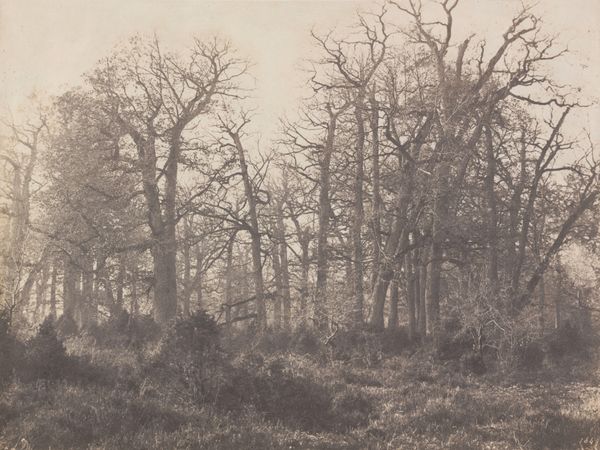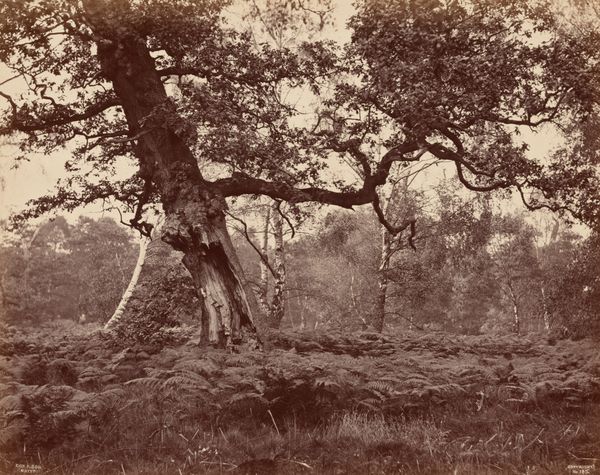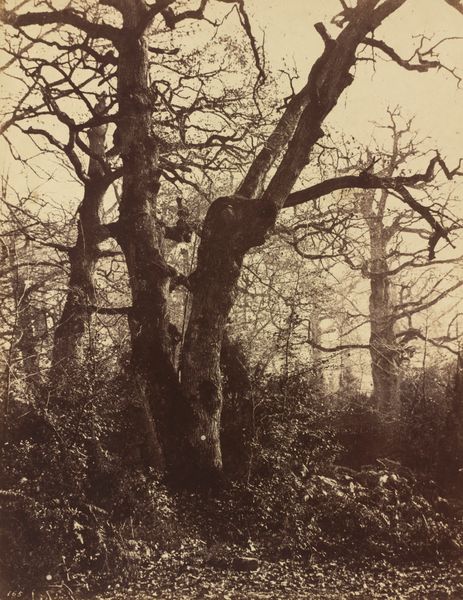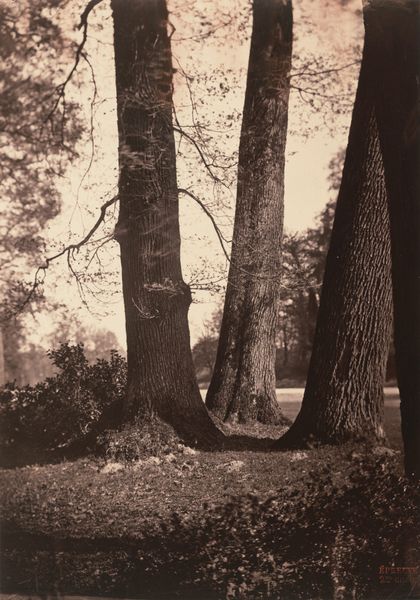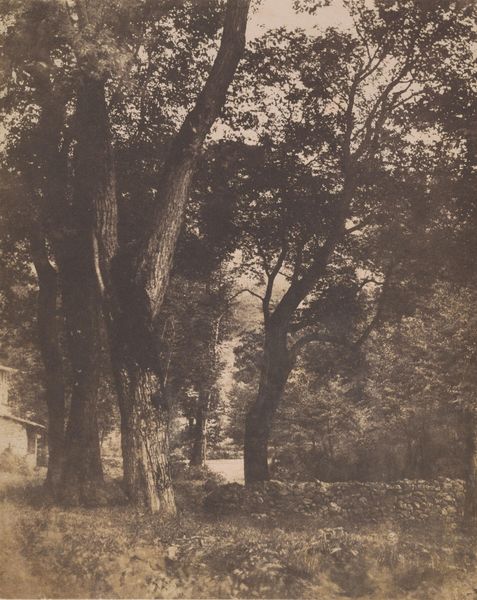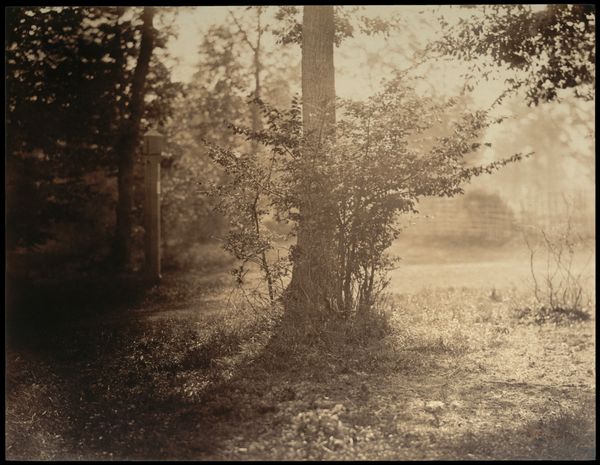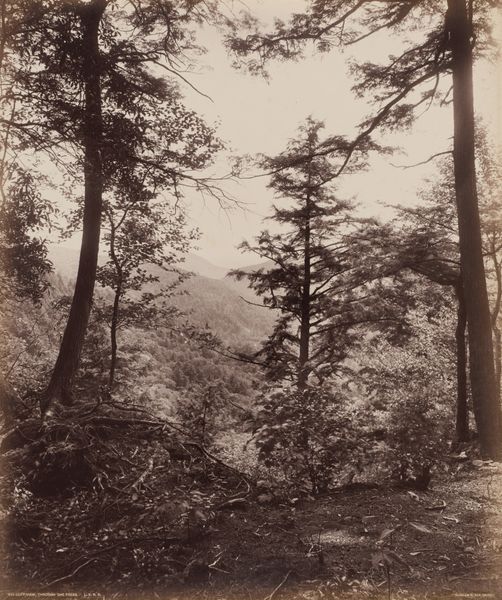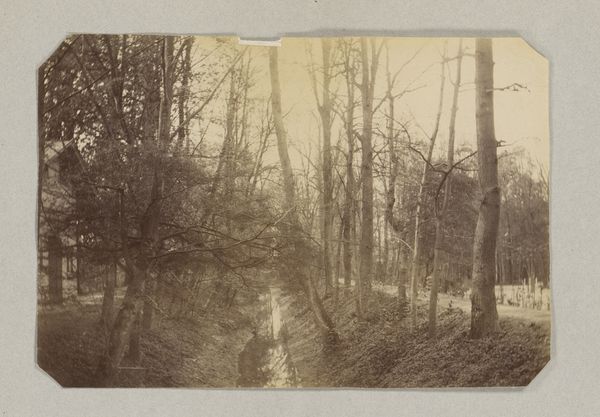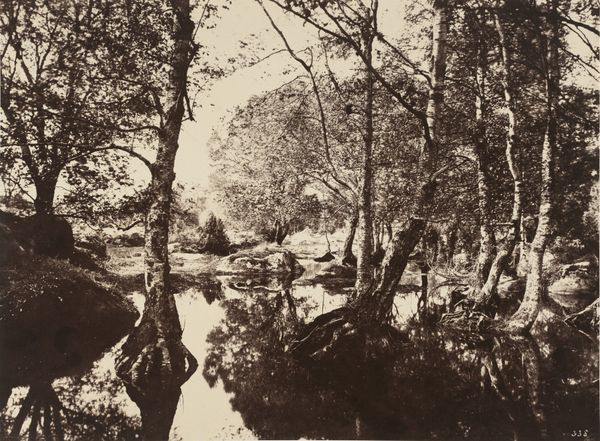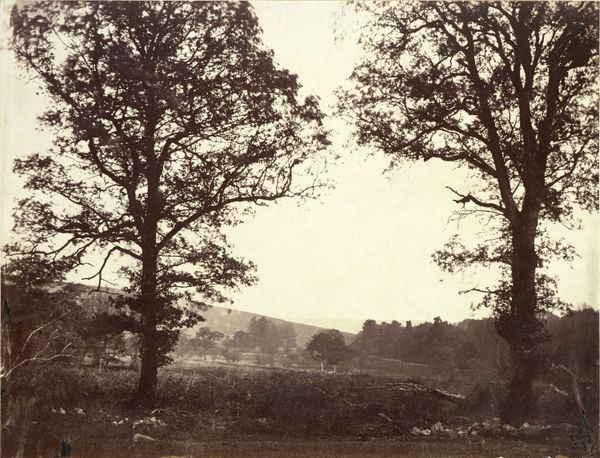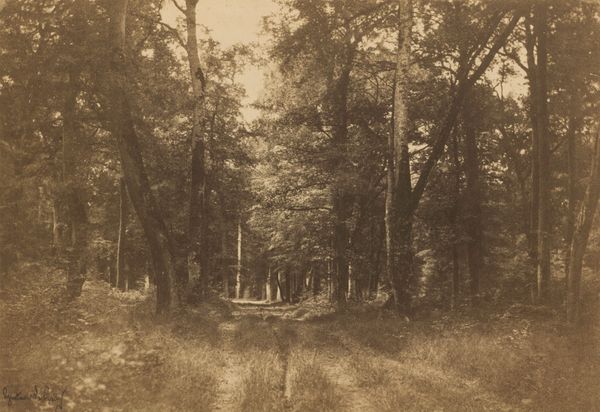
Dimensions: Image: 9 15/16 × 13 7/16 in. (25.2 × 34.2 cm) Sheet: 18 11/16 × 23 1/8 in. (47.4 × 58.7 cm)
Copyright: Public Domain
Editor: We're looking at "Near the Bodmer Oak, Fontainebleau," a photograph from the 1860s by Eugène Cuvelier, rendered in gelatin silver print. It’s held at the Met. It feels so still, so full of a hushed kind of reverence, like stepping into a cathedral made of trees. What do you see in this piece, beyond the obvious trees and foliage? Curator: More than you might think, actually. I see Cuvelier inviting us into a dialogue about photography itself. Think about it: in the 1860s, photography was still wrestling with its identity as art. Landscape painters were hugely popular, capturing grand vistas. Here, Cuvelier offers us something quieter, more intimate, and perhaps even a little subversive. The soft focus, the dappled light…does it remind you of any paintings of the time? Editor: Hmm, maybe Impressionism, with the emphasis on light, but those didn't really come to fruition until the 1870’s. Curator: True, but the seeds were there, a yearning for a new way of seeing. What is truly captivating is the feeling that we’re stepping into Cuvelier’s own experience of being in this forest. He is present, not simply documenting nature from a distance, which in turn, offers us an intensely romantic encounter of forest bathing through the lens. I see here a rejection of painting and instead the first step toward something different and just as exciting: the truth of light. Editor: So, less about capturing the “perfect” scene and more about capturing a feeling? Curator: Precisely! Perhaps that's where the lasting magic of this photograph resides, and why it still beckons us today. Editor: That makes a lot of sense. I will now go off into the woods with my camera in the search of "a feeling." Thanks for this wonderful encounter. Curator: Wonderful. Farewell, now!
Comments
No comments
Be the first to comment and join the conversation on the ultimate creative platform.
